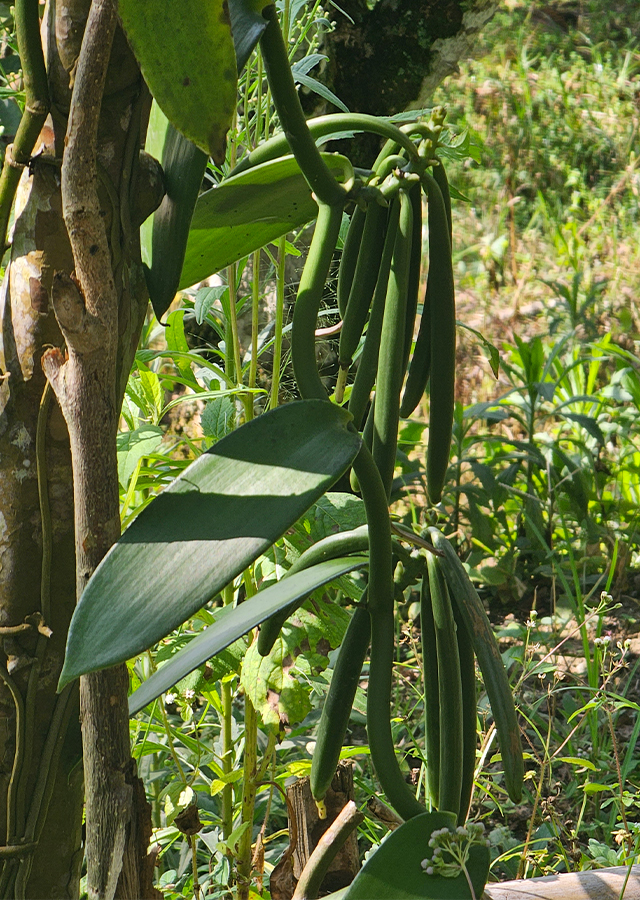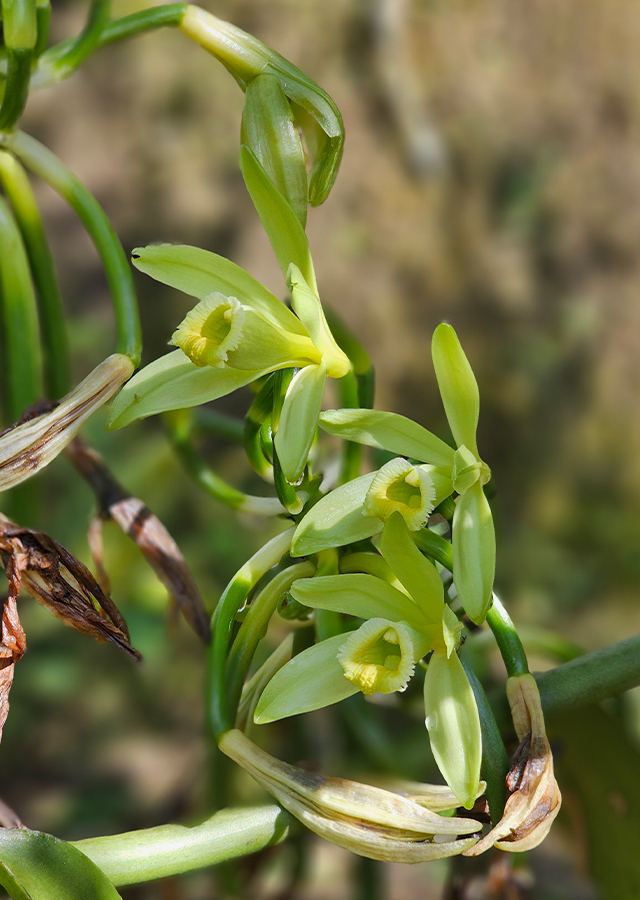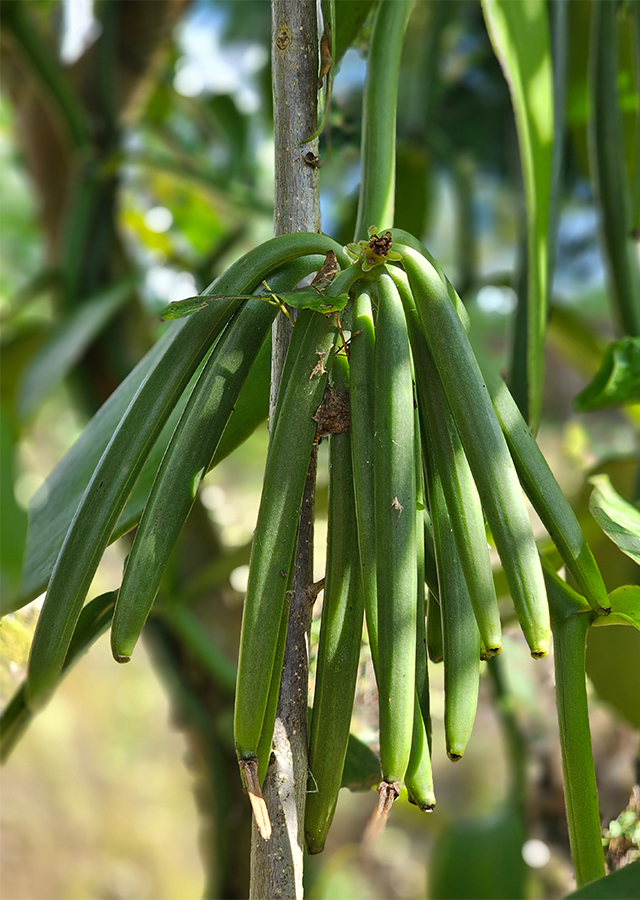Vanilla
Vanilla planifolia Andrews
Orchidaceae
Location in our garden
Palm



Synonym
Epidendrum rubrum Lam.
Myrobroma fragrans Salisb.
Notylia planifolia (Andrews) Conz.
Habitus
Climbers. A fleshy, succulent-stemmed, perennial climbing plant, producing a stem that can be 5-15 m
Part Used
Seeds
Fruit
Growing Requirements
Need Shade
Habitat
Forest
Overview
Vanilla is native to Mexico and Central America, and is well suited for any tropical homestead. It is one of the world's most important spices, a member of the orchid family. Vanilla is the most labor-demanding agricultural product in the world that is why it is so expensive. The plant has an economic life of about 10-15 years before yields drop and it needs replacing.
Vernacular Names
Echte vanille (German), Vainiglia (Italian), Tlilxochitl (Mexican), Vanille (Dutch), Vainilla comun (Spanish), Aaanilaa (Thailaind).
Agroecology
Vanilla thrives in the tropical lowlands. It grows best in areas where annual daytime temperatures are in the range 21-30 °C. Prefers a mean annual rainfall of 2,000-2,500 mm, requires a position in semi-shade, well-protected from winds. Prefers a pH in the range 5.5-7, tolerating 4.3-8.
Morphology
- Roots - aerial roots that are produced from the stem nodes. It is often epiphytic, or becomes epiphytic as the lower portion of the stem withers and dies.
- Stems - cylindrical long 1–2 cm diameter, succulent, dark green simple or branched.
- Leaves - alternate, fleshy and sub-sessile. Lamina flat, oblong-elliptical to lanceolate 8–25 × 5–8 cm, apex acute to acuminate, with numerous parallel veins.
- Flowers - sepals and petals are erect-spreading, yellow-green, fleshy, rigid; sepals 3 oblanceolate, 3.5–5.5 × 1.1–1.3 cm, margins straight, apex acute to obtuse, an hairy to apex; column white.
- Fruits - a pendulous, narrow cylindrical capsule, obscurely 3 angled splitting longitudinally when ripe.
- Seeds - globose, 0.4 mm in diameter, and black in colour.
Cultivation
- By seed - surface sow, preferably as soon as it is ripe, and do not allow the compost to dry out.
- Vegetative propagation is by cuttings, 90-120 cm long, with at least three leaf nodes. New shoots develop after 30-40 days.
Chemical Constituents
Vanillin, vanillic acid, hydroxybenzaldehyde, hydroxybenzoic acid, anisic acid, caproic acid, vitispiranes, coumarin.
Traditional Medicinal Uses
- This plant has various benefits such as antibacterial, anti-ageing, anti-depressant, relieve pain, lowers blood pressure, soothes burns, anti-cancer, promotes healthy skin, good for digestion, boost cognitive actions, increased libido, treatment of cough, anti-inflammatory, dental health, treatment of acne, aids weight loss, treatment of menstrual problems, aids wound healing.
- Neurological research reveals that vanilla extract may prove useful in treatment of depression, anxiety disorders, nervous disease and hypochondria.
- In traditional medicine, vanilla beans are used as aphrodisiac, carminative, emenagogue and stimulant and has been claimed to reduce or cure fevers, spasms and caries.
Part Used
Reference Sources
- de Guzman, C.C. & J.S. Siemonsma (eds.). (1999). Plant Resources of South-East Asia No. 13 Spices. Backhuys Publisher, Leiden.

